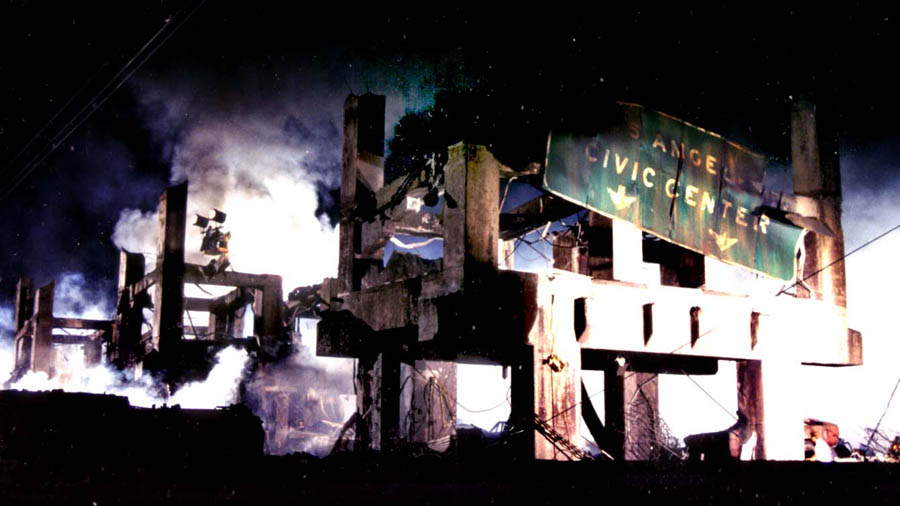John Muto

AS: So you were doing miniatures on that film?
JM: I was around it. I wasn’t really doing it. On the first film, on Battle Beyond the Stars I was hired as an animator. The guy who was running the visual effects for Roger Corman, a guy named Chuck Comisky, this strange visionary guy. He’s still around, he worked on Avatar. He would see qualities in people that no one else would really see. He looked at this crazy, underground animation I’d done and said there’s no reason you couldn’t do effects animation and hired me. So that’s another lucky break that I ran into him.
So I did those two movies and then this Comisky guy started his own company. So I went with him and we worked a variety of pictures, some good, some bad.
AS: You were mostly doing visual effects then?
JM: That was all I was doing. I was like an art director there. They ended up putting me in contact with Dick Sylbert and his crowd on a movie called Strange Invaders which was written by Bill Condon, the guy who did Dream Girls. I was around this and saw that the people doing art direction and production design didn’t really understand the visual effects. In the olden days it was the same department. I did visual effects on several mainstream pictures that convinced me that there was a big need for someone like me in production design. I foolishly thought that I’d make more money and have more power. The tail that wags the dog now is visual effects. Visual effects wags everything else. I really thought production design was more important.
The last movie that the company did, which destroyed the company, was a movie called Jaws 3D. Directed by a production designer. Terrible movie. Incredibly frustrating. Although I got to do some really cool stuff because I would draw the original storyboards and people would shoot all these plates. Then I would go into a video studio and composite them in 3D. I’d call out directions so I could adjust where things were in space, you know, looking at things through a World War II map reader. There’s a whole article about it in American Cinematographer that I had to help write because there was no one else the writer could talk to that could make sense of it. I was the highest placed layman.
AS: You were determining how close the shark gets to the camera?
JM: On a piece of film if an image is in the same spot on both eyes it’s at the window. If it diverges one way it goes behind the window and by the same token if it diverges the other way it brings it off the window.
Pingback: Michael Novotny
Pingback: John Myhre